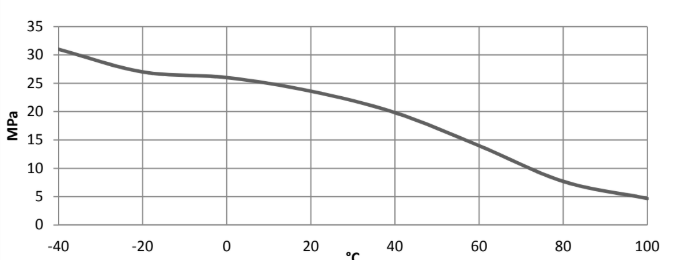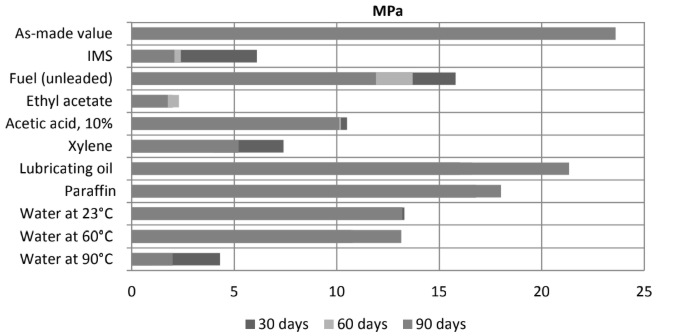Enhanced TDS
Identification & Functionality
- Chemical Family
- RTU Product Type
- Technologies
- Product Families
Features & Benefits
- Ready-to-Use Product Features
- Features and Benefits
- Fast setting
- Bonds well to a wide range of metals and plastics materials
- Tolerant to ‘’less than ideal’’ pretreatment
- Gap filling up to 8 mm
- Tough flexible bonds for use in dynamic environment
Applications & Uses
- Application Area
- Compatible Substrates & Surfaces
- Markets
- Applications
- Processing Information
- Pretreatment: The strength and durability of a bonded joint are dependant on proper treatment of the surfaces to be bonded. At the very least, joint surfaces should be cleaned with a good degreasing agent such as acetone or other proprietary degreasing agents in order to remove all traces of oil, grease and dirt. Low grade alcohol, gasoline (petrol) or paint thinners should never be used. The strongest and most durable joints are obtained by either mechanically abrading or chemically etching (“pickling”) the degreased surfaces. Abrading should be followed by a second degreasing treatment.
Mix ratio Parts by weight Parts by volume Araldite® 2048-1/A 100 100 Araldite® 2048-1/B 11 10 Araldite® 2048-1 is available in cartridges incorporating mixers and can be applied as ready to use adhesive with the aid of the tool recommended by Huntsman Advanced Materials.
- Application of adhesive: The resin/hardener mix may be applied manually or robotically to the pretreated and dry joint surfaces. Huntsman's technical support group can assist the user in the selection of an suitable application method as well as suggest a variety of reputable companies that manufacture and service adhesive dispensing equipment. A layer of adhesive 0.05 to 0.10 mm thick will normally impart the greatest lap shear strength to the joint. Huntsman stresses that proper adhesive joint design is also critical for a durable bond. The joint components should be assembled and secured in a fixed position as soon as the adhesive has been applied. For more detailed explanations regarding surface preparation and pretreatment, adhesive joint design, and the dual syringe dispensing system.
- Equipment maintenance: All tools should be cleaned with hot water and soap before adhesives residues have had time to cure. The removal of cured residues is a difficult and time-consuming operation.If solvents such as acetone are used for cleaning, operatives should take the appropriate precautions and, in addition, avoid skin and eye contact.
Typical times to minimum shear strength
Temperature °C 10 15 23 40 Cure time to reach
LSS > 1MPahours minutes 70 50 35 10 Cure time to reach
LSS > 10MPahours minutes 80 70 45 15
Technical Details & Test Data
- Typical Cured Information
Average lap shear strengths of typical metal-to-metal joints (ISO 4587) (typical average values)
Cured for 16 hours at 40°C and tested at 23°C. Pretreatment - Sand blasting, isopropanol degreasing
Average lap shear strengths of typical plastic-to-plastic joints (ISO 4587) (typical average values)
Cured for 16 hours at 40°C and tested at 23°C. Pretreatment - Lightly abrade and isopropanol degrease.
Lap shear strength versus temperature (ISO 4587) (typical average values)
On aluminium, cure: 16 hours at 40°C, Pretreatment - Sand blasting, isopropanol degreasing
Roller peel test (ISO 4578) (typical average values)
On aluminium sandblasted, cured: 16 hours at 40°C : 5.4 N/mmGlass transition temperature (DMA) (typical average values) ( ISO 6721)
Cure: 16 hours at 40°C : 67°CShear properties (ISO 6721). (typical average values) Cure: 16 hours/40°C
Shear Modulus -40°C - 1.1 GPa
0°C - 353 MPa
23°C - 166 MPa
80°C - 2.8 MPa
120°C - 1.5 MPaShore hardness (ISO 868) (typical average values):
cured: 16 hours at 40°CLap shear strength versus Thermal cycling (ISO 4587) (typical average values)
On aluminium. Pretreatment :sandblasting Cure: 16 hrs/40°C
100 cycles of 6 hours duration from -30°C to 70°CTensile properties (ISO 527). Cure 16hrs at 40°C (typical average values)- tested at 23°C
Tensile strength - 13 MPa
Tensile modulus - 364 MPa
Elongation at break - 91 %Lap shear strength versus immersion in various media (ISO 4587) (typical average values)
On aluminium, cured for 16 hours at 40°C and tested at 23°C. Pretreatment - Sand blasting, isopropanol degreasing. Unless otherwise stated, L.S.S. was determined after immersion for 30, 60 and 90 days at 23°C.
Lap shear strength versus tropical weathering (ISO 4587) (typical average values)
(40°C/ 92% RH), on aluminium, cured for 16 hours at 40°C and tested at 23°C. Pretreatment - Sand blasting,isopropanol degreasing

Lap shear strength versus heat ageing (ISO 4587) (typical average values)
On aluminium, cured for 16 hours at 40°C and tested at 23°C. Pretreatment - Sand blasting, isopropanol degreasing

Storage & Handling
- Storage and Handling Information
- Araldite® 2048-1 must be stored at 2 - 8 °C provided the components are stored in sealed containers. The expiry date is indicated on the label.
- Our products are generally quite harmless to handle provided that certain precautions normally taken when handling chemicals are observed. The uncured materials must not, for instance, be allowed to come into contact with foodstuffs or food utensils, and measures should be taken to prevent the uncured materials from coming in contact with the skin, since people with particularly sensitive skin may be affected. The wearing of impervious rubber or plastic gloves will normally be necessary; likewise the use of eye protection. The skin should be thoroughly cleansed at the end of each working period by washing with soap and warm water. The use of solvents is to be avoided. Disposable paper - not cloth towels - should be used to dry the skin. Adequate ventilation of the working area is recommended.
Other
- Application Information
Value Units Test Method / Conditions Mix Ratio 0.11 %(W) %(W) Hardener : Resin - Physical Properties
Value Units Test Method / Conditions Specific Gravity 1.0 -
